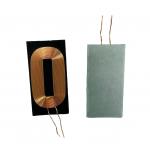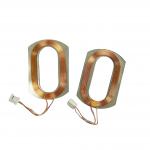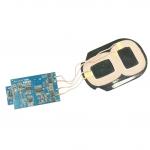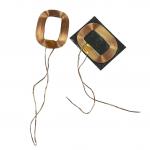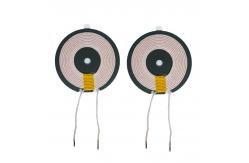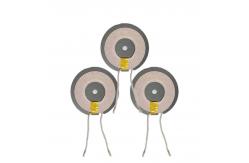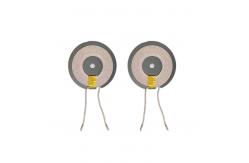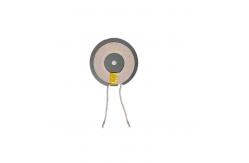G50-6.3UH Qi Standard Wireless Charging Coil Enameled Wire
Receiving Coil1.Product Description6.3 μ H enameled wire receiving coil is a key electronic component
that operates based on the principle of electromagnetic induction,
designed specifically for receiving electromagnetic signals or
energy. It uses enameled wire as the winding material, which has
the advantages of good insulation and convenient winding. A
specific inductance of 6.3 μ H enables it to efficiently convert
external alternating magnetic fields into electrical signals or
energy within a specific frequency range. In wireless charging
applications, it serves as the core component of the receiving end,
accurately receiving the magnetic field energy transmitted by the
transmitting end and converting it into electrical energy that can
be used by the device; In communication equipment, it can capture
electromagnetic signals of specific frequencies in the air and
provide basic electrical signals for signal processing. Due to its
compact structure and stable performance, it is widely used in
miniaturized and integrated electronic devices, providing strong
support for achieving various wireless functions. | Application | Characteristics of 6.3μH Enameled Wire Receiving Coil | | Wireless Charging | - High Efficiency: Designed to efficiently convert the magnetic
field from the transmitting coil into electrical energy, ensuring a
relatively high power transfer efficiency for charging devices. | | - Optimal Inductance: The 6.3μH inductance value is optimized to
resonate with the transmitting coil in the wireless charging
system, facilitating stable and reliable energy transfer. | | - Good Compatibility: Compatible with various wireless charging
standards, allowing it to be used in different types of wireless -
charging - enabled devices. | | Communication Systems (e.g., Radio, RFID) | - Frequency - specific Reception: Can selectively receive
electromagnetic signals at frequencies related to its inductance
value, enabling accurate signal reception in communication
applications. | | - Low Noise: The enameled wire helps to reduce electrical noise,
resulting in a cleaner received signal, which is crucial for high -
quality communication, such as in radio receivers where noise can
distort audio. | | - Compact Design: Its compact size makes it suitable for
integration into small - sized communication devices like RFID tags
or portable radios without taking up much space. | | Sensor Applications (e.g., Magnetic Field Sensors) | - Sensitivity to Magnetic Fields: Highly sensitive to changes in
the magnetic field, enabling it to accurately detect and convert
magnetic field variations into electrical signals in sensor
applications. | | - Stability: Maintains stable performance under different
environmental conditions, providing reliable sensing results. The
enamel coating also protects the wire from environmental factors,
enhancing its durability. | | - Customizability: Can be customized in terms of winding patterns
and core materials to adapt to specific sensor requirements, such
as different magnetic field strengths and detection ranges. |
2.Performance Characteristics The 6.3 μ H enameled wire receiving coil has outstanding
performance characteristics in multiple aspects. Excellent in
electromagnetic conversion efficiency, with a precise inductance
value of 6.3 μ H, it can efficiently convert external alternating
magnetic fields into electrical signals or energy, especially in
wireless charging scenarios, with seamless coordination with the
transmitting end, achieving stable and efficient energy
transmission. The enameled wire material not only provides good
insulation, effectively reduces electromagnetic interference and
signal loss, ensures signal purity, but also gives the coil a
compact and lightweight appearance, making it easy to integrate
into various miniaturized electronic devices. In addition, the coil
has high selectivity for electromagnetic signals of specific
frequencies. In the fields of communication and induction, it can
accurately receive target signals while demonstrating good
stability and durability, adapting to various complex environments
and providing reliable guarantees for the stable operation of
equipment. |
